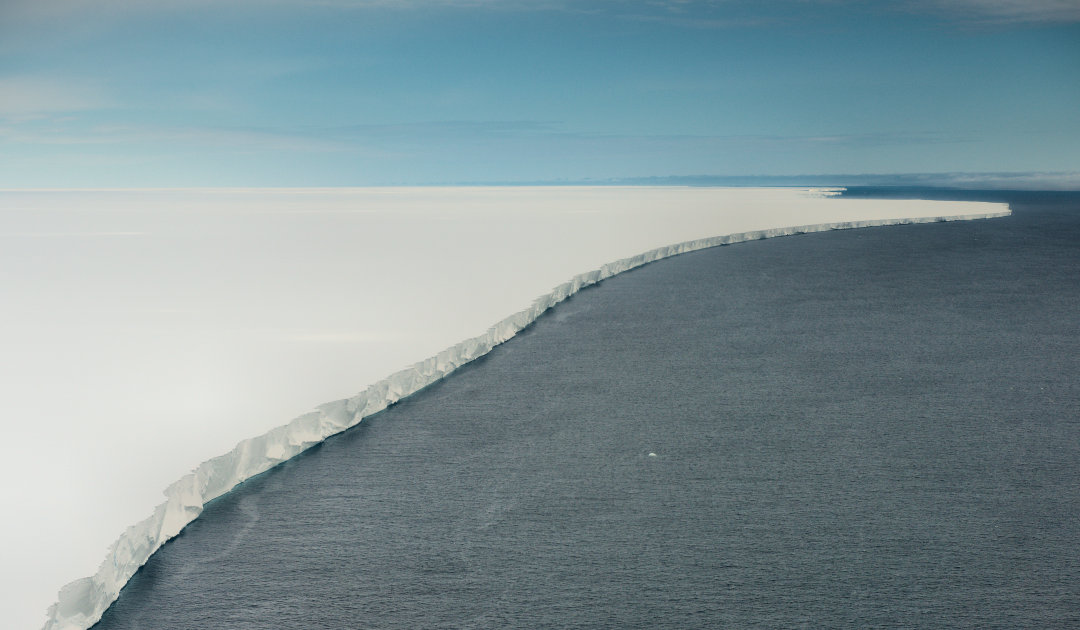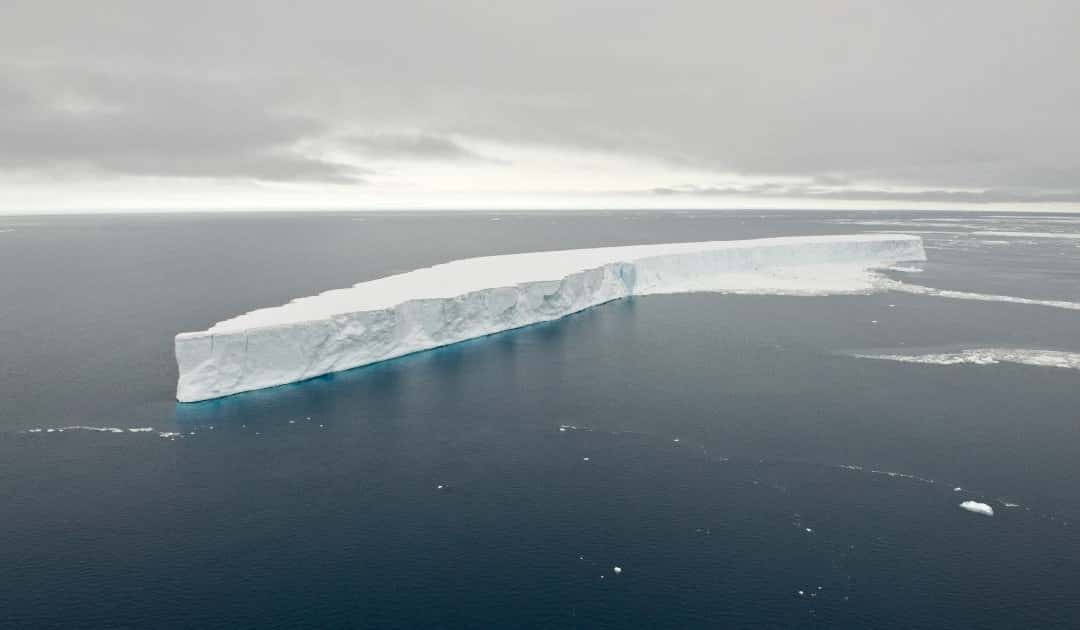
In 2002, the Larsen B ice shelf, an area of 3,250 square kilometers, collapsed on the Antarctic Peninsula. In the years before, frequent, smaller calving occurred and the flow velocity of the ice increased, which is atypical for an ice shelf. A new study now shows that this unusual behavior may have been signs of impending collapse. In the future, these warning signs could help to detect further collapses of Antarctic ice shelves at an early stage.
“The collapse of the Larsen B ice shelf is generally thought of as an independent event,” said Shujie Wang, assistant professor at Pennsylvania State University and lead author of the study. “Our work shows that it was the last phase in a calving sequence that began in 1998 and was controlled by both atmospheric and oceanic warming anomalies that weakened the ice shelf structure over time.”
Researchers have long known that rising air and water temperatures are melting and weakening the ice shelves from above and below. However, the exact processes that lead to the collapse of an ice shelf are not yet well understood. A better understanding of how ice shelves respond to ongoing warming is important for predicting sea level rise, the team of authors said.

“Ice-shelf loss from environmental warming is the fastest way for Antarctica to drive sea-level rise, but remains very hard to predict in part because we have so few observations,” said Richard Alley, Evan Pugh University Professor of Earth Sciences at Pennsylvania State University and co-author of the study. “The Larsen B ice shelf was not holding back much land ice, and so its loss was not very important for sea level, but it offers an outstanding laboratory to learn the early warning signs and the processes of ice-shelf loss. The new insights gained here should help in the larger effort to project how warming will interact with the ice shelves to control future contributions to sea-level rise.”
In the study, published in the journal Earth and Planetary Science Letters, the research team looks at the behavior of the ice shelf back to the 1960s and analyzed changes over time using satellite data, model experiments and climate reanalysis data.
They concluded that prior to collapse, the ice shelf transitioned from a phase of typical large calving events to one of more frequent, smaller breakoffs and faster flow velocity. According to the authors, the latter could serve as a quantifiable precursor to the destabilization of the ice shelf.
“Typically, large chunks of ice break off, regrow for decades and break off again,” explains Wang, who is also with the Earth and Environmental Systems Institute at Pennsylvania State University. “Here, many smaller calving events occurred, and the ice did not regrow. And when it retreated from rocky islands that served as a buttress for the ice shelf, that could no longer hold the flow back.”

Five of the smaller calvings that occurred between 1998 and 2002 could be linked to climate anomalies such as La Niña and the Southern Annular Mode. Warmer ocean water may have cut channels beneath the ice shelf and further weakened the shear margins, vulnerable parts of the ice shelf. The shear margins separate flowing ice from stagnant ice or rock and often have more fractures and softer ice, the researchers said.
The team suspects that breakup of a shear margin may have triggered the calving impulses. With the accompanying retreat of the ice, it broke away from small rocky islands that served as buttresses to hold the ice sheet in place. “When you pin a piece of paper to a wall, the pins prevent the paper from falling to the floor,” Wang said. “It’s the same with ice flow — these rocky islands serve as ‘pinning points’ that anchor ice and slow down its march to the sea.”
According to the researchers, the distribution of such rocky islands beneath ice shelves can help determine the vulnerability of an ice sheet. In Larsen-B, the weakened shear margins and limited anchoring sources played an important role in destabilization.
Julia Hager, PolarJournal
More on the subject:





